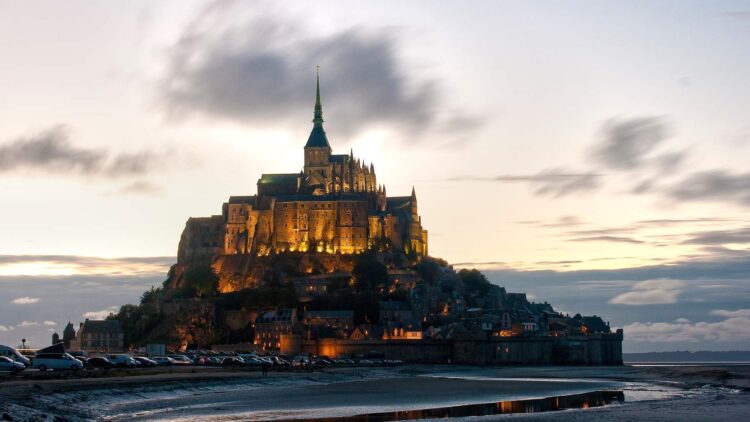There are some places on Earth that are naturally gorgeous, and there are some places that have been made gorgeous by humans with what they have built, but there are some very special places that have the privilege of being both, like Mont Saint-Michel. This ancient Abbey in France is one of the great examples of medieval defensive architecture in Normandie that works with natural defensive features like tides. What makes this place even more remarkable is that it has been 1,000 years since its construction, and not only is it still standing, but it also remains one of the most special places in European History.
Located just out of the French coast on an island it was built as a religious structure and, although its purpose has changed through the years, it has played a very important role in the history of France over the past centuries. Today, it is one of the most visited tourist attractions in the country, with 1.3 million tourists each year.
French President Emmanuel Macron wrote on Twitter on June 5 following an official visit to the site “In the span of 1,000 years, its silhouette has become an emblem of French universalism. Its abbey, the symbol of what we are: a people of builders.”
Mont Saint-Michel, one of the marvels of humanity that we still get to celebrate
One of the things that make this place as special as it is, is the limited access that it has, as tides block the path to this island for the majority of the day and it is quite easy to get trapped accidentally in the Abbey. This quirk of the building is what made UNESCO declare it a World Heritage site in 1979 and get the nickname “wonder of the Western world”.
It was a sanctuary from its construction in 709 when a sanctuary in honor of Saint Michael the Archangel was erected and continued to be a sacred site from the 11th to the 16th century, temporarily becoming a fortress during the Hundred Years’ War of the 14th and 15th century and surviving a 30-year siege by the British. It also became a prison during the French Revolution.
Later, just before WWI it started to become the tourist attraction of today, with one of the most popular landmarks being the Mère Poulard inn, which has been hosting visitors since 1888. This establishment, famous on its own right because author Ernest Hemingway in 1944 reported from there the D-day landings.
But today the magic of the place is threatening to disappear and that is because of the same affliction that many popular places have nowadays, which is massification. While it has always been popular with tourists, it is now getting almost out of hand. Thomas Velter, managing director of Mont Saint-Michel National Public Establishment, told CNN “It was the biggest pilgrimage site in the West, centuries ago, ahead of Santiago de Compostela.”
And now, 3 million people visit the site every year. Ascension weekend being one of the most popular this year. Velter also told CNN “We sold 10,500 tickets at the abbey, which is a record. Ascension weekend is usually quite busy but in this case, it was a lot of people all at the same time.”
In total, there were around 33,000 people on site, not a record in itself, but still a lot for the Mont, which usually expects this amount of tourists in August, the time of the high season.
Velter continues “It’s primarily the visitor who suffers because the visit of the Mont is less comfortable. Ever since Covid, tourists have less tolerance for packed days like this because they were able to taste the joy of visiting sites with barely any visitors. I don’t think it’s a good thing for the shopkeepers, hoteliers and restaurants because they simply can’t keep up with the customer demand. Mont Saint-Michel is a square kilometer in circumference, and one shopping street. When you put more than 5,000 people at a specific time on the street, I don’t think it’s very pleasant. Take advantage of the nature and boat tours we’ve set up, for example. There are seals, eels and Atlantic salmon here. What we often forget is that there is the largest colony of dolphins in Europe so it’s also a chance to discover Mont Saint-Michel differently.”

